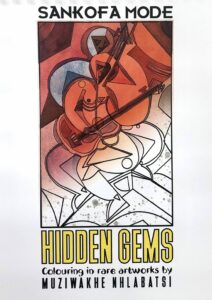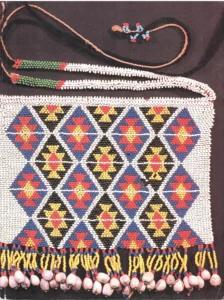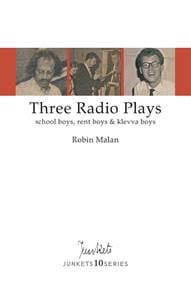Rainbow Scars
R230A white woman brings up the born free black girl in Cape Town suburbia– in the process alienating her from the rest of her township
family.
Showing 17–32 of 88 results

A white woman brings up the born free black girl in Cape Town suburbia– in the process alienating her from the rest of her township
family.

The greatest form of wisdom lives inside us and Journaling is an amazing way to tap into our own brilliance. We colour-in, expressing our unique creativity and allow our minds to reflect & relax. The Sankofa Mode Hidden Gems book is the coming together of 3 beautiful and empowering elements; Colouring-in, Journaling & the wisdom of Proverbs from various tribes across Africa.
Containing colouring artworks designed by the legendary veteran illustrator Muziwakhe Nhlabatsi (born 1954) from South Africa, these detailed line artworks bring together tribal aesthetics from all over our ‘Colourful continent’. By colouring-in the artworks you get to collaborate with an esteemed African Artist and engage with a broad range of African Cultural Aesthetics.

Somewhere on the Border was written in exile and was intercepted in the post and banned by the apartheid censors. This one-act version of the play brings the South African Border War back into public discourse and pierces through the armour of silence, secrecy and shame that still surrounds it.

Sophiatown was the ‘Chicago of South Africa’, a vibrant community that produced not only gangsters and shebeen queens but leading journalists, writers, musicians and politicians, and gave urban African culture its rhythm and style. This play, based on the life history of Sophiatown, opened at the Market Theatre in Johannesburg in February 1986 to great acclaim. The play won the AA Life Vita Award for Playwright of the Year 1985/86. This new edition of the play includes an introduction which sets the work in its historical context.

Combative, volatile, constantly on the verge of exploding, Dwayne and Shanell Combrink are two halves of a white South African working-class couple, when Namhla Gumede, born on 16 June 1976, arrives on their doorstep. A smouldering dark comedy suddenly leads to startling revelations, rage and recrimination
 Out of stock
Out of stockTen Years of Collecting (1979-1989), David Hammond-Tooke and Anitra Nettleton, softcover, published by the University of the Witwatersrand, 1989, tearing, creasing and wear to cover, shelf wear.
 Out of stock
Out of stockInternationally renowned, Peter Rich’s career represents a lifelong attempt to find a contemporary, yet uniquely African mode of design. This book follows the chronology of his work which emerges from a fascination with African tribal settlements, including his documentation, publication, and exhibition of Ndebele art and architecture, and his friendship with sculptor Jackson Hlungwani.

Lucky has been brought up in a small rural black community. But is he really black?… Issues of identity and belonging crowd in on Lucky, who is thrown off balance by the publicity surrounding him , yet enjoys the attention and sudden ‘celebrity’ this brings. In the end, who is Lucky?

This publication is devoted to William Kentridge’s (born 1955) multimedia cycle The Nose (based on Gogol’s short story of the same name), comprised of the video installation “I Am Not Me, the Horse Is Not Mine,” plus sculptures, tapestries and works on paper. Kentridge describes this cycle as an elegy for the artistic language of the Russian Constructivists.

The Standard Bank Foundation of African Art, housed at the University of the Witwatersrand Art Galleries was begun ten years ago. This exhibition, one of the largest of its kind ever held in South Africa, commemorates a partnership which expresses the true ideals of both private enterprise and public education in this country.
 Out of stock
Out of stockThe Thabo Mbeki I Know is a collection that celebrates one of South Africa’s most exceptional thought leaders. The contributors include those who first got to know Thabo Mbeki as a young man, in South Africa and in exile, and those who encountered him as a statesman and worked alongside him as an African leader.

In some dystopian future, all homo-sexual people have been shipped into space. From his hermetically sealed pod, the Boy looks down on a ruined , devastated Earth. It is a story of loss, grief and isolation.

Craig Higginson’s first three plays for adult audiences – collected here in one volume – represent one of the strongest debuts in contemporary South African theatre. Although each can be seen as a variation on the theme of the post-apartheid state of the nation play, they are also engaged with realities in Zimbabwe, the Congo and contemporary Europe. Higginson’s experience of growing up in wartorn Zimbabwe and apartheid South Africa have given him a deep-rooted and potent angle from which to dramatize a dialogue between Europe and Africa.

Band of Brothers travels back and forth in time over a period of twelve years to unravel a sex scandal in a boys’ school. The British Maharajah and the German Rentboy bills itself as a ’fantasy woven from facts’, presented as a quasi radio documentary. Clayton Crawford, PhD is a piece of total realism, the entire action taking place over one evening, with dramatic time mimicking real time.

From America to Africa to Asia, dandyism is a way of life. We are Dandy throws open the doors of the wardrobe and explores the dandy as a global phenomenon.

What Remains is a fusion of text, dance and movement to tell a story about the unexpected uncovering of a slave burial ground in Cape Town, the archaeological dig that follows and a city haunted by the memory of slavery. When the bones emerge from the ground, everyone in the city – slave descendants, archaeologists, citizens, property developers – is forced to reckon with a history sometimes remembered, sometimes forgotten.
No products in the basket.